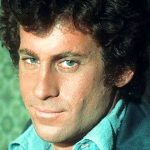Johnny Nash scored a number-one hit back in 1972 with his song ‘I Can See Clearly Now.’. Unfortunately, he will be seeing clearly no longer. According to Johhny Nash III, his father dies of natural causes in his Houston home on October 6, 2020.
Let’s pay this legendary musician our respects by taking a closer look at his life and career. Nash is famous for his iconic hit song, but he‘s also an actor who stars in three films. A masterful producer that got the chance to work with some of the greatest reggae artists in music history.
Bob Marley fans should certainly pay extra attention to this video. He might not have ever found international success if it weren’t for Nash – but we’ll get to that in a minute. First, let’s see how Johnny got his start in the music industry and how he found success for himself.
Before we get started, are you interested in partnering with Facts Verse? You can get your brand right here in front of your target audience, getting thousands of eyes on your business or product! To learn more about our sponsorship program, contact us today at [email protected]!
Childhood And Early Career
Johnny Nash was born John Lester Nash Jr in Houston, Texas on August 19, 1940. He was raised by his father, John Lester Nash Sr., and his mother, Eliza. Nash had a passion for music from an early age. He is a child, he sings in the choir at the Progressive New Hope Baptist Church in South Central Houston. He wore his bright white little suit that his mom picked out for him but he wasn’t embarrassed. Also, he was always confident in his ability even from an early age.
Even though Nash grew up in the city, he also enjoyed rural life. He’d often visit his grandmother’s ranch in Edge, Texas where he would ride horses and learn all about farm life. It was during his visits to that property that he got the opportunity to sing in locally produced country music.
Nash learned discipline as a Boy Scout and he did fairly well in school. When he was 13, he won a talent show at his high school.
After winning the talent contest, Nash got a job as a golf caddy at a local Houston area golf course. While working there several players caught wind of Nash’s talent. One such player, Frank Stockton, a real estate broker offered him 4 bucks for an impromptu performance. Stockton impresses that the next day he pulls a few strings so that Nash could have his first professional audition
Thanks to Stockton’s help, Nash got the opportunity to sing covers of popular R&B songs on Matinee – a regional variety show that aired on KPRC-TV in Houston. Before he knew it, Nash had somehow managed to become the first Black person with a regular slot on a Houston area television station. The money wasn’t bad either. Nash was taking in a cool $60 a week which adjusted for inflation today comes out to $648.97. Not bad for a 13-year-old. Nash’s own father wasn’t even bringing home a paycheck that fat.
In 1958 after recording his first single ‘A Teenager Sings the Blues’ on the ABC-Paramount label he landed another gig singing on Arthur Godfrey’s radio and television show. He’d stick with that opportunity for the next seven years.
Nash also had an interest in acting. In 1959 he starred in Louis S. Peterson’s screen adaptation of the play Take A Giant Step. For that performance, Nash won a Silver Sail Award from the prestigious Locarno International Film Festival.
JAD Records
In 1965 Johnny Nash, Arthur Jenkins, and fellow musician and legendary producer Danny Sims formed there own label in New York City. JAD Records got its name from the initials of its three founders. The label would go on to sign some of the most influential reggae and R&B artists of all time.
Bob Marley, Peter Tosh, Bunny Wailer, And Rita Marley all signed long-term contracts with JAD in the late sixties and early 70s. Other notable performers signed to the label included Byron Lee, Neville Willoughby and Jimmy Cliff.
One of the most interesting signings to the label was four young brothers from Newport, Rhode Island. The Cowsills signed with JDA before they signing with MGM. The brothers here 9,11,15 and 16 when they went into the New York studio and recorded some of their early covers like ‘Either You Do Or You Don’t’ and ‘You Can’t Go Halfway’. The group would go on to record their own original song ‘All I Really Wanta Be Is Me” which they released as their debut single in 1965.
Finding Success In Jamaica
In addition to ‘I Can See Clearly Now’, Johnny Nash would record quite a bit of material in Jamaica. He first traveled there in 1968. His girlfriend at the time had connections with Neville Willoughby, a local television and radio host, and novelist.
Nash had plans to bring the colloquial proto-reggae rocksteady style to the American airwaves. Upon Willoughby’s recommendation, Nash linked up with a struggling group called The Wailers. That’s when he got acquainted with Bob Marley, Peter Tosh, and Bunny Wailer, all of whom helped Nash get a foot in the door with the local music scene.
Nash signed all three Wailers band members to exclusive contracts with the JAD label and helped finance some of their early recordings. He employed the help of Byron Lee’s Dragonaires, Jackie Jackson, Lynn Taitt, and other local artists on some of those tracks. Unfortunately none of the Bob Marley or Peter Tosh songs that he helped produce found any commercial success. Two singles release in that era, ‘Bend Down Low’ in 1968 and ‘Reggae on Broadway’ in 1972. During that same 1972 recording session, Nash recorded his number-one hit “I Can See Clearly Now’.
That song sold over a million copies and was certified Gold by the RIAA in November 1972. On the I Can See Clearly Now Album four original Bob Marley compositions include including ‘Guava Jelly’, ‘Comma Comma’, ‘Stir It Up’, and ‘You Poured Sugar On Me’.
‘Stir It Up’ and ‘There Are More Questions Than Answers’ became the second and third singles from that album to get airplay.
Quick side-note. If you’re enjoying this video so far, make sure you give it a like and show us some support by subscribing to our channel.
And keep watching to find out all about Johnny Nash’s later career and final years.
Nash’s Other Projects And Post- JAD Records Career
Johnny Nash composed the soundtrack for the Swedish romantic drama Vill Sa Garna Tro in 1971/ In that film he also took on the role of Robert. Bob Marley co-composed the soundtrack and Fred Jordan helped with some the arrangements.
JAD Records shut its doors in 1971 but 26 years later it revives by reggae archivist Roger Steffens and french producer Bruno Blum when they set out to compile a ten-album compilation of the Complete Bob Marley and The Wailers works from 1967 to 1972. Several of Nash’s Bob Marley and Peter Tosh tracks were remixed and remastered for that collection.
Some of Johnny Nash’s other big hits include the rocksteady tune “Hold Me Tight” which peaked at number 5 in the US and ‘Stir It Up’ which was written by Marley before he found worldwide success. Nash’s biggest hit in the UK was ‘Tears On My Pillow’ which peaked at number one on the British charts in 1975.
Nash had become increasingly disillusioned by the decadence of the music industry. After ‘Tears on My Pillow’ and 1976s cover of Sam Cooke’s ‘What A Wonderful World’, he started to withdraw from the music business. Although he re-emerged briefly in 1979 when he penned a song dedicated to the families of the kids that were killed in Atlanta, Georgia’s serial killings that year.
In 1986, he released his final album ‘Here Again’. The album featured the minor hit ‘Rock Me Baby’ which reached the top-20 on the Swiss charts. That album’s second single ‘Baby You’re Mine’ was much less successful.
Nash had hoped that the album would successfully help him to stage a comeback but after it failed to have a significant impact on the charts, he abandoned his goal of making a full-fledged return to the music industry.
Johnny Nash’s Final Years
Nash spent the latter quarter of his life with his family back home in Houston. He and his third wife Carlie ended up raising two children together. He also opened a venue called the Johnny Nash Indoor Arena that served as a youth rodeo during the day and competitive riding hall at night.
In 1994, Nash’s biggest hit ‘I Can See Clearly Now’ was re-introduced to modern listeners when Jimmy Cliff covered it for the Cool Runnings soundtrack. Nash’s original recording of the song appeared in the opening scene of Grosse Point Blank in 1997,
In 2006, Nash made a return to the studio and began singing again at SugarHill and Tierra Recording Studios in Houston. He tirelessly worked on transferring his analog tape masters from the 70s and 80s to a digital Pro Tools format.
Tragedy struck just two years later when a trove of Nash’s original material was lost in the 2008 Universal fire. Hundreds of other musicians and filmmakers also lost their material in that ill-fated blaze.
Nash spent out the rest of his days surrounded by his family. After a period of declining health, he died peacefully of natural causes at his home on October 6, 2020. He was 80 years old when he passed away.
Well, here we are once again at the end of another facts-packed video. We offer our sincerest apologies if you now have “I Can See Clearly Now” stuck in your head. But to be fair, you’re the one that clicked on this video so that’s really all on you.
We’d love to hear from you. What’s your favorite Johnny Nash song? I Can See Clearly Now, Stir It Up or Tears on My Pillow? Leave your favorite in the comments section below.
And before you go, do us a quick favor by hitting the like button and subscribing to our channel. By tapping the bell icon, you can turn on notifications so you can keep up with all of our latest videos.


